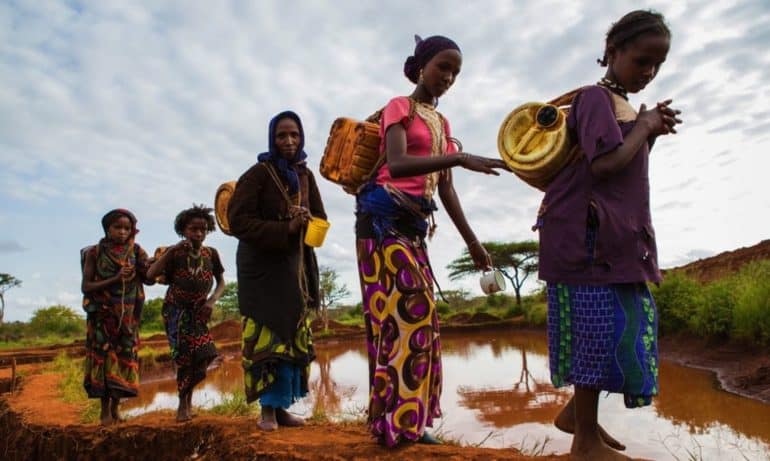Responsible for an estimated 56 percent of agricultural production, family farming remains an integral part of food systems around the world. As the International Year of Family Farming (IYFF) continues, the U.N. Food and Agriculture Organization (FAO) and numerous other organizations around the globe are focused on how these small-scale farms can provide food security, improved nutrition, economic stability, and sustainable food practices. In many countries, a key piece of the family farming equation is being undervalued or even ignored.
Fifty percent of farmers around the world are women, yet they are rarely recognized for their contributions to food production and security. In most developing countries, women still cannot own land or make decisions regarding their households and family farms. Men remain the principle receivers of agricultural resources, deciding what crops will be grown, how they are sold, and what the family can do with the profits. While these historic gender gaps are difficult to overcome, Zimbabwe is making strides to do just that.
The Women Farmers, Land, and Agricultural Trust (WFLAT) in Zimbabwe is providing training and support networks for women farmers so they can become a successful part of the agricultural community. “We are hoping for a society where women have equitable access to land and agricultural resources,” stated Phides Mazhawidza, Director of WFLAT. Those being helped by the organization attend workshops and receive training in their local communities. Participants are encouraged to meet with other women farms to share knowledge, ideas, and solutions.
Women in Dangarendove, Zimbabwe have turned an abandoned plot of land into a community garden, supplying fresh produce to nearby towns. Traditionally, their roles kept them indoors while their husbands worked to financially support the family. Upon seeing the success of the garden, men in the community become supporters of the women’s efforts. This shift is a substantial one, given that women have never been able to take on leadership roles like this before.
In response to the success of the Dangarendove Community Garden, the Ministry of Women’s Affairs, Gender, and Community Development submitted a request to the FAO for further support. The FAO provided resources to 826 gardens across the country, affecting more than 42,000 farmers, 92 percent of which were women. The local community and the FAO recognize that these projects provide improved nutrition and food security for families, as well as progress toward gender equality.
To encourage additional growth, the Ministry also educates women in business practices so they can better manage their finances and track income. The Ministry has since purchased farm equipment and implemented new techniques to improve the garden’s efficiency.
Organizations like WFLAT, and projects such as the Dangarendove Community Garden, are encouraging signs in the fight for gender equality in family farming. Zimbabwe’s initiatives can serve as an example for other developing countries as they become more accepting of women in agricultural leadership roles. This is an essential shift that needs to be made; according to the FAO, if women in rural areas had equal access to land, resources, and education, the number of hungry people in the world would decrease by 100 to 150 million.
At an event earlier this year recognizing International Women’s Day and discussing women’s roles in agriculture, World Food Programme (WFP) Executive Director Ertharin Cousin summarized, “Empowering women means that the entire family benefits, it means that the entire community benefits, it means the entire country benefits and ultimately the entire global world benefits.”













